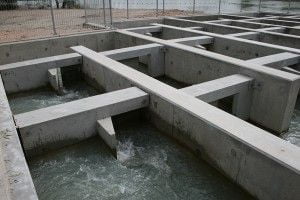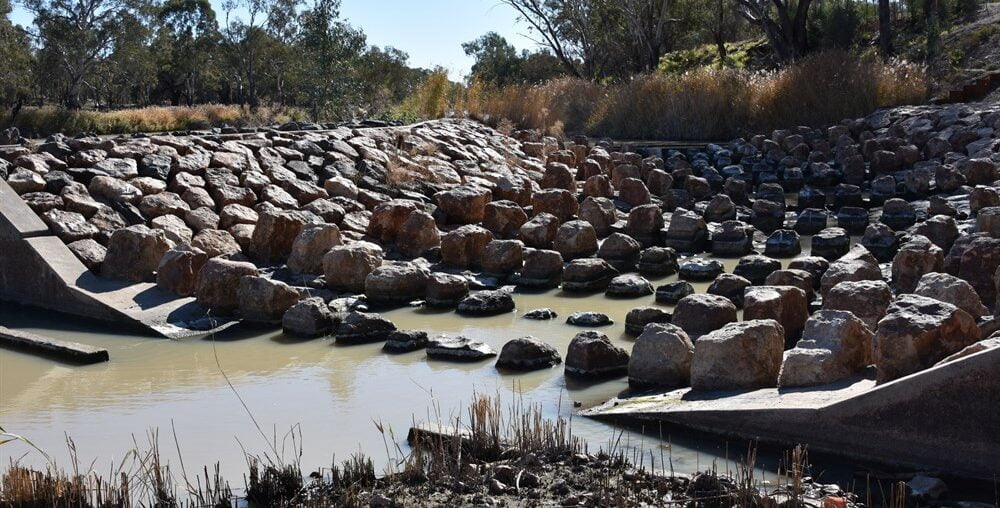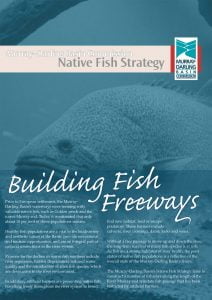It sounds like the start to a bad joke, but fish really do climb ladders. And they do it quite well! Fish ladders, also known as fishways, are specially designed diversions to help fish overcome human-made barriers as they make their way upstream. Since 2000, fish ladders have been installed in all locks, weirs and barrages in the Murray, ensuring fish have full connectivity along 2,225 kilometres of river from the Murray mouth and up to Hume Dam—the so-called ‘Sea to Hume Dam Fish Highway’. They ensure fish have the ability to safely migrate. That, in turn, increases the overall health of native fish in the Murray, allowing them to complete their full life cycles.
The success of the fish highway program is clear from data obtained from tagged fish, which have been recorded up and down the Murray. Monitoring shows that as many as 10,000 native fish a day, across 13 species, use the fishways, including fish as small as three centimetres or up to a metre long. The record for the greatest distance travelled goes to a tagged Silver Perch, which was recorded swimming 897 kilometres (km) from Lock 8 to Lock 26, over three months from October 2016. A Golden Perch also impressed, swimming 255 kilometres, from Lock 4 to Lock 9, over 21 days, averaging 12 kilometres a day.
Vertical slot fishways:
The most common type of fish ladder in the Basin is the vertical-slot fishway. Usually at the side of locks/weirs, the fishway provides a gentle slope of running water that attracts fish and gives them a way of swimming up to the next level. Small areas of refuge are built-in so fish can take a break from swimming against the water flow, as they ascend. The video below shows how the vertical slot fishway works.
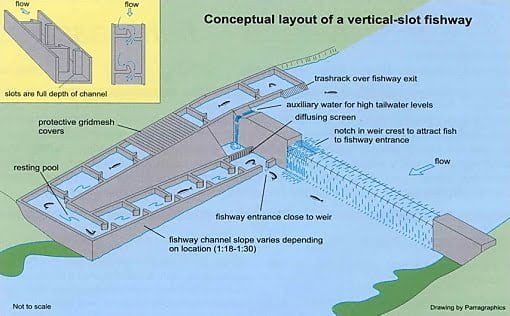
Source: https://www.dpi.nsw.gov.au/fishing/habitat/rehabilitating/fishways
Rock ramp fishways:
The other type of fishway that is being used in rivers across Australia to facilitate fish passage is the rock ramp fishway. Large rocks and timbers are used to create pools and small falls that mimic natural structures. Due to the length of channel needed for the ladder, such structures are most appropriate for relatively short barriers.
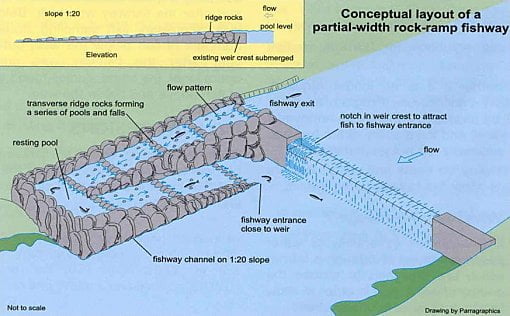
Source https://www.dpi.nsw.gov.au/fishing/habitat/rehabilitating/fishways
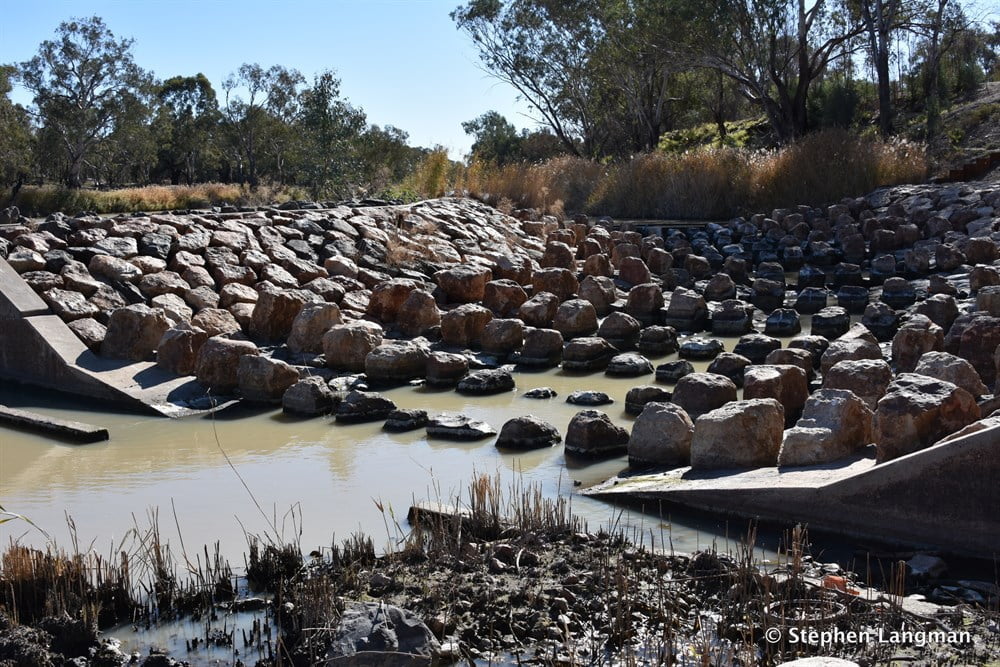
Source: https://www.exploroz.com/places/111199/nsw+brewarrina-rock-ramp-fishway
This video shows the construction of a large rock ramp fishway at the South Dubbo weir. This fishways stretches right across the river channel.
The fishways have proven a major benefit to native fish, especially Murray cod, Silver perch and Golden perch.
Some fishway sites also help with the management of carp, with special cages that stop carp from using the ladders. The video below shows the carp cage in operation at SA Water’s Blanchetown’s Lock One. The Lock One carp cage began operation in 2007. Native fish swim underneath the cage and avoid being trapped. The cage is checked and emptied at regular intervals. It is emptied more often during spring and summer, since carp are most active along the River Murray system between August and April. Around 80 tons of carp have been removed from Lock One in September. It is illegal to return carp to the River Murray. Carp caught in the SA Water cage are humanely euthanised. The carp are processed by a licensed fisheries company and used in products including fish bait, cat food and fertiliser.
For more information:
Sea to Hume fishways – monitoring outcomes
In 2001, the Murray-Darling Basin Commission (now MDBA) approved construction of fishways on all of the Locks and Barrages from Hume Dam to the mouth of the River Murray, thus ensuring continuous fish passage along this 2,225 km length of river. In order to assess whether constructed fishways were effective, researchers sought to answer a few questions.
